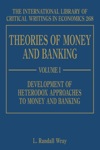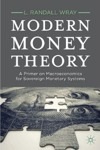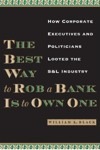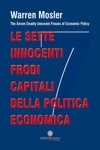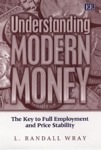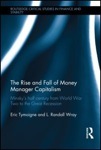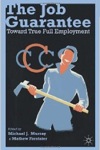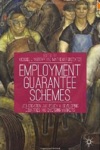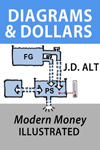Bank Whistleblowers United
Posts Related to BWU
Recommended Reading
Subscribe
Articles Written By
Categories
Archives
November 2025 M T W T F S S 1 2 3 4 5 6 7 8 9 10 11 12 13 14 15 16 17 18 19 20 21 22 23 24 25 26 27 28 29 30 Blogroll
- 3Spoken
- Angry Bear
- Bill Mitchell – billy blog
- Corrente
- Counterpunch: Tells the Facts, Names the Names
- Credit Writedowns
- Dollar Monopoly
- Econbrowser
- Economix
- Felix Salmon
- heteconomist.com
- interfluidity
- It's the People's Money
- Michael Hudson
- Mike Norman Economics
- Mish's Global Economic Trend Analysis
- MMT Bulgaria
- MMT In Canada
- Modern Money Mechanics
- Naked Capitalism
- Nouriel Roubini's Global EconoMonitor
- Paul Kedrosky's Infectious Greed
- Paul Krugman
- rete mmt
- The Big Picture
- The Center of the Universe
- The Future of Finance
- Un Cafelito a las Once
- Winterspeak
Resources
Useful Links
- Bureau of Economic Analysis
- Center on Budget and Policy Priorities
- Central Bank Research Hub, BIS
- Economic Indicators Calendar
- FedViews
- Financial Market Indices
- Fiscal Sustainability Teach-In
- FRASER
- How Economic Inequality Harms Societies
- International Post Keynesian Conference
- Izabella Kaminska @ FT Alphaville
- NBER Information on Recessions and Recoveries
- NBER: Economic Indicators and Releases
- Recovery.gov
- The Centre of Full Employment and Equity
- The Congressional Budget Office
- The Global Macro Edge
- USA Spending
-
Category Archives: Uncategorized
“Enough Wall Street Nonsense”
Comments Off on “Enough Wall Street Nonsense”
Posted in Uncategorized, William K. Black
Tagged Control Fraud, William K. Black
Geithner-AIG scandal
“NY Fed, AIG Emails Spark New, Bipartisan Criticism Of Geithner“. See the discussion here, here and here.
The video is here.
The Contributions of Paul Samuelson: An Institutionalist’s Perspective
By Phil Klein
I know I’m a little behind, but I’m only just catching up with the debate (see here and here) over the importance of Paul Samuelson’s contribution to economics. I’ve found the discussion of the underconsumption controversy especially interesting because it took me back to a debate in the department of economics, not exactly yesterday, but germane to the discussion in AFEE in December. It also pertains to a reconsideration of the forecasting ability of Paul Samuelson.
I have always found it useful to acquire each edition of Samuelson’s book as it appears because it chronicles neatly each fad in economics, particularly economic theory, as it appears.
The underconsumption controversy and Paul Samuelson were both involved ultimately in the appraisal of Keynes’ General Theory and the work on which it was based.
In Samuelson’s first edition (1948), Keynes is mentioned exactly twice in the index (pages 253 and 303). (How long ago was 1948? For answer, my edition informs us that the book cost $3.25.) To be fair to Samuelson, he did recognize that Keynes might be different – he does call him, “a many-sided genius.” But he then refers to his non-economics interests – a large insurance company, the ballet, the drama, how to make money, etc. In the end, he tells us that the General Theory “created one of the greatest stirs in economic thinking of the century, and is likely to live longer than his other works as a classic.”
It is clear that Samuelson had reservations about Keynes from the beginning. For example, he says of Keynes’ work that “its broad fundamentals are increasingly accepted by economists of all schools of thought, including, it is important to notice, many writers that do not share Keynes’ particular policy viewpoints and who differ on technical details on analysis.”
At the University of Texas, there was considerable discussion concerning the General Theory when it came out in 1936. The Austin discussion of Keynes’ General Theory started from its publication. By the mid 40s, it had begun to focus on the relationship of Keynes’ work in contrast to the work of S. Gordon Hayes. In this early discussion of Keynes, it is interesting and important to note Ayres’ position. At this time, the “underconsumption controversy” was going hot and heavy. Keynes was discussed in connection with the book by H. Gordon Hayes, Spending, Saving, and Employment (1946):
“The principal difference between the position taken in this book and that taken by Keynes is, in part, a matter of emphasis. He stresses the importance of investing what is not consumed, and here the emphasis is on consuming what is not invested. The difference, however, is more than a matter of emphasis. Keynes holds that the real cause of unemployment is lack of investment, while I ascribe it to a lack of consumption. He sees a continuous increase in investment as the remedy for unemployment, while I regard that as impossible. I believe that the very condition that ‘makes investment necessary’ if we are to have employment – namely, lack of consumption – prevents additional investments from being profitable.” (Samuelson’s only comment is to include the underconsumption theory among what he refers to as “one of the five better known theories” of the business cycle.)
The dispute between the underconsumption theory and the overinvestment theory waxed hot and heavy in the department. Ayres sided with the underconsumptionists, and his colleague, Professor Everett Hale, led the overinvestment theorists. The dispute culminated with Ayres’ ultimately declaring, “I would gladly sell Gordon Hayes down the river if it would keep peace in the family.”
Upon reflection, I would think today the possible cause of unemployment, it could be argued, rather than being caused by underconsumption OR overinvestment, is caused by the disparity between the rate of consumption and the rate of investment.
The underconsumption controversy was by no means the last time that Samuelson’s position was murky at best and unhelpful in introducing the Americans to Keynes’ work. (That job was far better done by Dudley Dillard, whose book introduced the basic Keynesian theory in a simpler framework designed to make the introduction to Keynes easier to grasp.) As for the theory itself, Alvin Hansen applied the theory to the United States’ economy in a way that made the international relevance of the theory easier to understand.
Samuelson restricts his comments on Hansen mainly to his work on the “secular stagnation” view.
Work at the National Bureau of Economic Research did a good deal to study the implications of Keynesian theory for the study of business cycles. In this connection, the Bureau, particularly in the work of Ilse Mintz, focused the business cycle theory on growth cycles as well as level cycles. Not only did this work show that the level of economic activity fluctuated cyclically, but so did the rate of growth. The turning points in the rates of growth had the further advantage of leading the fluctuations in the level of activity.
Instead of recognizing the value of this insight for forecasting, Samuelson said that the National Bureau was in danger working itself out of a job. Therefore, it was clear in short order that Samuelson was dead wrong here. Much work has since been done showing that studies of growth rates was a valuable contribution to the efforts to make leading indicators lead cyclical activity as well as reflecting it.
In sum, Paul Samuelson’s reputation for making accurate contributions to our understanding of business cycles are at most very small indeed.
Comments Off on The Contributions of Paul Samuelson: An Institutionalist’s Perspective
Posted in Uncategorized
Tagged Institutional Economics
Anti-Regulators: the Federal Reserve’s War against Effective Regulation
Introduction
The first decade of this century proved how essential effective regulators are to prevent economic catastrophe and epidemics of fraud. The most severe failure was at the Federal Reserve. The Fed’s failure was the most harmful because it had unique authority to prevent the fraud epidemic and the resulting economic crisis. The Fed refused to exercise that authority despite knowing of the fraud epidemic and potential for crisis.
The Fed’s failures were legion, but five are worthy of particular note.
- Greenspan believed that the Fed should not regulate v. fraud
- Bernanke believed that the Fed should rely on self-regulation by “the market”
- (Former) Federal Reserve Bank of New York President Geithner testified that he had never been a regulator (a true statement, but not one he’s supposed to admit)
- Bernanke gave the key support to the Chamber of Commerce’s effort to gimmick bank accounting rules to cover up their massive losses – allowing them to report fictional profits and “earn” tens of billions of dollars of bonuses
- Bernanke recently appointed Dr. Parkinson as the Fed’s top supervisor. He is an economist that has never examined or supervised. He is known for claiming that credit default swaps (CDS) (the financial derivatives that destroyed AIG) should be unregulated because fraud was impossible among sophisticated parties.
Each error arises from the intersection of ideology and bad economics.
The Fed’s regulatory failures pose severe risks today. Three of the key failed anti-regulators occupy some of the most important regulatory positions in the World. Each was a serial failure as regulator. Each has failed to take accountability for their failures. Last week, Dr. Bernanke asserted that bad regulation caused the crisis – yet he was one of the most senior bad regulators that failed to respond to the fraud epidemic and prevent the crisis. As Dr. Bernanke’s appointment of Dr. Parkinson as the Fed’s top supervisor demonstrates, the Fed’s senior leadership has failed, despite the Great Recession, to learn from the crisis and abandon their faith in the theories and policies that caused the crisis. Worse, the Fed is an imperial anti-regulator, seeking vastly greater regulatory scope at the expense of (modestly) more effective sister regulatory agencies. The Fed’s failed leadership is setting us up for repeated, more severe financial crises.
Dr. Parkinson as Anti-Regulator
This essay focuses on Chairman Bernanke’s recent appointment of Dr. Parkinson to lead the Fed’s examination and supervision. My central point is that Dr. Bernanke appointed Dr. Parkinson because he shared Dr. Bernanke’s anti-regulatory ideology and has never changed those views even in the face of the Great Recession. The anti-regulator policies that Bernanke and Parkinson championed were the principal drivers of the fraud epidemic that have produced recurrent, intensifying crises.
Bernanke’s appointment as the Fed’s top supervisor of an individual that had no experience in regulation, in the midst of the greatest crisis of our lifetime, is irresponsible and dangerous on its face. No ideology has proven more disabling in this crisis than neoclassical economics. Dr. Parkinson is a neoclassical economist. The “skills” an economist would purportedly bring to supervision have proven to be disabilities in identifying and understanding fraud and risk.
We need not rely on generalities – Dr. Parkinson has a record relevant to supervision that we can evaluate. The most revealing aspects of that record fall into three categories. First, Dr. Parkinson was a leading proponent of the obscene (and successful) effort to prevent CFTC Chair Born from taking regulatory action to prevent destructive credit default swaps (CDS). Second, Dr. Parkinson, like Greenspan and Bernanke, subscribed to the naïve view that fraud was impossible in sophisticated financial markets and that credit rating agencies were reliable. Third, Dr. Parkinson endorsed the international “competition in regulatory laxity” that Dr. Bernanke (belatedly) warned has degraded regulation on a global basis. Here are the key passages from Dr. Parkinson’s congressional testimony:
Professional counterparties to privately negotiated contracts also have demonstrated their ability to protect themselves from losses from counterparty insolvencies and from fraud. In particular, they have insisted that dealers have financial strength sufficient to warrant a credit rating of A or higher. This, in turn, provides substantial protection against losses from fraud.
***
If this opportunity is lost, the Board is concerned that market participants will abandon hope for regulatory reform in the United States and take critical steps to shift their activity to jurisdictions that provide more appropriate legal and regulatory frameworks.
The “opportunity” Dr. Parkinson feared would be “lost” was to remove the CFTC’s ability to regulate CDS. Anti-regulation would “win” the international competition in laxity. His policies made possible the catastrophe that is AIG. Dr. Bernanke is aware of Dr. Parkinson’s record of anti-regulatory failure. He chose Dr. Parkinson because of that record in order to ensure that the Fed would not take regulatory actions that would upset the biggest banks, particularly the systemically dangerous institutions (SDIs) that are the real governors of the Fed’s anti-regulatory policies.
Posted in Policy and Reform, Uncategorized, William K. Black
Tagged Policy and Reform, William K. Black
Timmy Geithner Must Go
SECRET EMAILS SHOW GEITHNER’S NYFED FORCED AIG TO HIDE DATA
By L. Randall Wray
Breaking News: As reported on Bloomberg here and in NYT here, secret emails show that the NYFed under Geithner’s command prohibited AIG from reporting that it was passing government bail-out funds directly to counterparties, including Goldman Sachs. AIG had been negotiating with the banks, asking them to take as little as 40 cents on the dollar against bad CDOs they held. AIG was the biggest insurer in the country and had provided $62 billion of credit default “insurance” to these banks. The CDOs went bad and AIG could not cover claims. It was forced into insolvency and the government came to the rescue, with $182 billion of bailout funds through last June. By all rights, its counterparties should have lost big on their bad bets. Apparently, Geithner arranged the bailout of AIG with full knowledge that it would pass the bailout funds directly to the banks. Whether or not some protection should have been provided to the banks, it clearly was not good public policy to provide dollar-for-dollar protection to them. If you are a favored Wall Street bank, no bet can go bad!
Note that Geithner worked with then Treasury Secretary Paulson to broker this deal. Paulson, of course, had been the CEO of Goldman. Geithner is the protégé of Clinton’s Treasury Secretary Rubin, also from Goldman.
According to Representative Darrell Issa, Republican of California, “It appears that the New York Fed deliberately pressured AIG to restrict and delay the disclosure of important information to the S.E.C.”. Not only did Geithner want to keep this information from the public, but also from fellow regulators. (Whoops, Geithner admitted he was never a regulator.) This smells fishy because it is. Geithner not only oversaw the operation but his office prohibited AIG from telling the truth about it. Remember, this is the same guy who “forgot” to pay his taxes (see here). He is ethically challenged. Should he be running the Treasury?
As Republican Congressman Brady of Texas put it, “Conservatives agree that, as point person, you’ve failed. Liberals are growing in that consensus as well. Poll after poll shows the public has lost confidence in this president’s ability to handle the economy. For the sake of our jobs, will you step down from your post?” (see here).
Posted in L. Randall Wray, Policy and Reform, Regulation, Uncategorized
Tagged Federal Reserve, L. Randall Wray, Policy and Reform, regulation
Let The Mea Culpas Begin, Part 2
BERNANKE’S APOLOGY FALLS FLAT
By L. Randall Wray
As discussed in Part 1 (see here), some of the policymakers responsible for this calamity have started to apologize. On January 3 Chairman Bernanke admitted that rather than using rate hikes back in 2004 to deflate the housing bubble, the Fed should have used “[s]tronger regulation and supervision aimed at problems with underwriting practices and lenders’ risk management” (see here).
There appear to be at least three reasons for Bernanke’s admission that the Fed did not do its job. First, and most obviously, Bernanke is up for reappointment (his term expires January 31)—and he will not sail through. The public is mad as hell, and politicians will have to put him through the wringer or face voter’s wrath in the next election. So Bernanke will have to appear contrite, and will apologize for his misdeeds many more times while Congress makes him sweat it out.
Second, Congress is actually considering whether it should strip the Fed of all regulatory and supervisory authority, given its miserable performance over the past decade—during which the Fed has consistently demonstrated that it has neither the competence nor the will to restrain Wall Street’s bankers. Since Greenspan took over the helm, the Fed has never seen a financial instrument or practice that it did not like—no matter how predatory or dangerous it was. Adjustable rate mortgages with teaser rates that would reset to levels guaranteed to produce defaults? Greenspan praised them (see here). Liar loans? Bring them on! NINJA loans (no income, no job, no assets)? No problem! Credit default swaps that let one gamble on the death of assets, firms, and countries? Prohibit government from regulating them! So Bernanke has to grovel and beg Congress to let the Fed retain at least some of its authority.
Third, many commentators blame the Fed for the crisis, arguing that it kept interest rates too low for too long, fueling the real estate bubble. Bernanke argues “When historical relationships are taken into account, it is difficult to ascribe the house price bubble either to monetary policy or to the broader macroeconomic environment”. If he can convince Congress that the problem was lack of oversight and regulation he can shift at least some of the blame to Treasury and Congress—since it was Treasury Secretary Rubin, and his protégé Summers, as well as Barney Frank, Christopher Dodd, and many others (significantly, Democrats who will now decide the Fed’s fate) who pushed through the deregulation bills in 1999 and 2000. He figures that if the Fed now supports re-regulation, he will be forgiven and the Democrats will be too embarrassed to admit their own misdeeds. (Significantly, Dodd has announced his retirement, in recognition of the role he played in creating the crisis. Another mea culpa on the way?)
While I do believe the Fed should be stripped of all such authority, I am sympathetic to his argument about monetary policy. Low interest rates do not cause bubbles. The Fed kept interest rates low after the NASDAQ crash because it feared deflation in the face of significant downward pressures on wages and prices globally (see here). The belief was that low interest rates would keep borrowing costs low for firms and households, helping to promote spending and recovery. In truth, spending is not very interest sensitive and the economy stumbled along in a “jobless recovery” in spite of the low rates. What was actually needed was a fiscal stimulus (if anything, low rates are counterproductive because they reduce government interest spending on its debt—as Japan’s experience taught us over the past couple of decades—but that is a point for another blog).
Still, the Fed was following conventional wisdom, and only began to gradually raise rates when job growth picked up in 2004. Over the following years, the Fed kept raising rates, and economic growth improved. (So much for conventional wisdom!) The worst excesses in real estate markets began only after the Fed had started raising rates, and lending standards continued their downward spiral the higher the Fed pushed its target interest rate. In other words, contrary to what many are arguing, the Fed DID raise rates but this had no impact in real estate markets.
Why not? Two main reasons. First, recall that Greenspan had promoted adjustable rate mortgages with teasers. No matter how high the Fed pushed rates, lenders could offer “option rate” deals in which borrowers would pay a rate of 1 or 2 percent for two to three years, after which there would be a huge reset. Lenders ensured the borrowers that there was no reason to worry about resets, since they would refinance into another option rate mortgage before the reset. That is the beauty of ARMs—they virtually eliminate the impact of monetary policy on real estate.
Second, and this was the key, house prices would only go up. At the time of refinance, the borrower would have far more equity in the home, thus obtain a better mortgage. Further, the borrower could flip the house and walk away with cash. While I will not go into this now, public policy actually encouraged homeowners to look at their houses as assets, rather than as homes (see here) (And now that many are walking away from underwater mortgages—treating houses as assets that became bad deals—policy makers and banksters are shocked, shocked!, that borrowers are treating their homes as nothing but bad assets.)
In truth, when speculation comes to dominate an asset class, there is no interest rate hike that can kill a bubble. If one expects asset prices to rise by 20%, 30%, or more per year, an interest rate of 10% will not dampen enthusiasm. To kill the housing boom, the Fed would have had to engage in a Volcker-like double-digit rate hike (in the early 1980s, he raised short-term interest rates above 20%). There was no political will in Washington (either at the Fed or the White House) for such drastic measures. Nor was there any reason to do this. Bernanke is quite correct: the Fed could have and should have killed the real estate boom with much less pain by directly clamping down on lenders, prohibiting the dangerous practices that were rampant.
Is there any reason to believe that Bernanke is the right Chairman, or that the Fed is the right institution, to lead the effort to re-regulate and re-supervise the financial sector? Quite simply, no.
The Bernanke-led Fed still does not understand monetary operations, as indicated by its recently announced plan to unwind its balance sheet. Over the course of the crisis, the Fed invented new procedures such as auctions through which it provided reserves. Throughout, it always was focused on quantities, rather than prices, using quantitative constraints on the size of the auctions. Further, Bernanke continually promoted “quantitative easing”, reflecting the view that quantities are what matter. Now, the Fed has begun to worry about the size of its balance sheet—and also the size of reserve holdings of the banking system (the other side of the balance sheet coin, because the Fed buys assets by issuing reserves). Still following the thoroughly discredited theory of Milton Friedman, too many bank reserves are supposed to promote too much lending which then causes too much spending and hence inflation. Thus, Bernanke and many outside the Fed fret about how the Fed can reduce outstanding reserves to prevent incipient inflation. The Fed proposes to create new bonds it will sell to reverse the “quantitative easing”.
Actually, the Fed’s tool is price, not quantity, of reserves. When the crisis hit, the Fed should have opened its discount window to lend reserves without limit, to all comers, and without collateral. That is how you stop a run. The Fed’s dallying and dillying about worsened the liquidity crisis, but it eventually provided the reserves that the financial institutions wanted to hold and its balance sheet eventually grew to $2 trillion. Banks are still worried about counterparty risk and possible runs, so they remain willing to hold massive amounts of reserves. When they decide risks have declined, they will begin to reduce reserve holdings. This will not require any special practices by the Fed. Banks will repay their loans from the Fed, using reserves. This automatically reduces reserves and the size of the Fed’s balance sheet. They will offer undesired reserves in the overnight, fed funds market. Since many banks will be trying to unload reserves at the same time, this will put downward pressure on the fed funds rate. The Fed will then offer to sell assets it is holding to mop up the excess reserves (banks will use reserves to buy assets the Fed offers). This will also reduce reserves and the size of the Fed’s balance sheet. All of this will happen automatically, following the same procedures the Fed has always followed. All it needs to do is to watch the fed funds rate, and when it falls below target the Fed will drain reserves to relieve the downward pressure on overnight rates.
Quantitative easing was a misguided notion, and reversal of quantitative easing is similarly misguided. It simply indicates that Bernanke still does not understand how the Fed operates. In truth, formulating and implementing monetary policy is extremely simple and can be reduced to the following:
1. Offer to lend reserves at the discount window at 50 basis points to all qualifying institutions;
2. Pay 25 basis points on reserve holdings;
3. Perform par clearing of checks between banks, and for the Treasury.
Surely President Obama can find a chair who can do that.
The Fed’s relationship with banks is too cozy to make it a good regulator. It is, after all, owned by private banks. The Fed’s district banks are often run by bankers, and district Fed presidents take turns sitting on the policy-making FOMC. There is a particularly incestuous relationship between the NYFed and Wall Street banks—with Timmy Geithner as a prime example of the dangers posed (“I’ve never been a regulator” proclaimed the former head of the NYFed). It does not have the proper culture to closely supervise financial institutions. Its top body, the Board of Governors, are political appointees often with no experience in regulation (many are academic economists, typically mainstream and with a free market orientation). While the FDIC was also mostly asleep at the wheel over the past decade, it does have the proper culture and experience to take over responsibility for regulating and supervising the financial sector. With some management changes, and hiring of a team of criminologists tasked to pursue fraud, the FDIC is the right institution for this job.
Let the Mea Culpas Begin, Part 1
RUBIN AND BERNANKE APOLOGIZE (SORT OF) FOR PAST SINS
Alan Greenspan has already apologized for the damage he wrought, admitting the crisis reveals that his approach to economics is fundamentally flawed.
Apparently it is now time for mea culpas from the rest of the team most responsible for creating this mess: Rubin, Summers, and Bernanke. Rubin and Bernanke just provided theirs (here and here) —albeit somewhat half-heartedly, a bit more Tiger Woods than David Letterman.
Don’t hold your breath for an apology from Summers, who never owns up to his mistakes, ranging from his proposal to use developing nations as toxic waste dumps to his argument that females suffer from congenital handicaps that render them incapable of doing science (here and here).
Still, with three out of the four acknowledging errors, this could indicate a New Year’s trend. Next we can hope that the University of Chicago—the institution most responsible for producing the theories that guided our misguided policymakers—will apologize for its indiscretions. That could set an example for all mainstream economists who, as the Queen pointedly put it, failed to foresee the crisis.
The statements by Rubin and Bernanke are quite interesting—both for what they say and for what they leave out. Rubin claims to have learned that we “need to reform the financial system to better protect against systemic risk and devastating crises in the future.” Nice deduction, Sherlock! But he goes further, admitting he has long had misgivings about the shape of the financial system: “About four years ago, a well-known London investor said to me that the only undervalued asset in the world was risk. I had the same view, as did many others, and often said that markets, including credit, had gone to excess and that would probably be followed by a cyclical downturn—perhaps a sharp one—though the timing, as always, was unpredictable.” Really? Four years ago? Did he try to warn the Bush administration’s regulators? Or his protégé, Timmy Geithner at the NYFed who was busy (by his own admission) NOT regulating banks?
At that time did he feel any guilt, since he was among the most important deregulators who had created the conditions that would ensure undervaluation of risk? Did he push for re-regulation of the financial institution he was running into the ground?
To be fair, Rubin notes other problems with the “free market” approach he used to advocate, indeed, his complaints sound remarkably similar to the arguments long made by progressives (including heterodox economists). For example, the market should not be counted on to determine income distribution:
“Even before the recession hit, our current model had displayed major shortcomings that markets, by their nature, won’t address and that need to be met through public policy. For example, market-based economics, global integration, and the strong growth that has resulted have been accompanied by serious income-distribution problems around the world, though the circumstances differ among countries.”
He even engages in a bit of class warfare:
“For example, market-based economics, global integration, and the strong growth that has resulted have been accompanied by serious income-distribution problems around the world, though the circumstances differ among countries. In the United States, median real wages have lagged behind productivity growth for more than three decades (except for the second half of the 1990s), and income has become more heavily distributed toward the most affluent.”
Hold it a second. The redistribution of income toward the affluent occurred as Wall Street “fat cat bankers” grabbed an ever rising share of corporate profits—the source of the bonuses paid to Rubin and his cronies. In 2006 Rubin received $29.4 million from Citigroup. That was four years ago, when he was supposedly fretting that the whole financial bubble was heading toward collapse (see here).
How about some clawbacks? Compensation caps? Investigations for fraud and significant jail time for fat cat bankers? Ban Goldman Sachs alum from Washington? Unfortunately, Rubin is mum on these issues.
After acknowledging the real suffering generated by Wall Street’s excesses, Rubin concludes:
“…virtually no one involved in the financial system—whether institutions, investors, regulators, analysts, or commentators—recognized the breadth of forces at work or the possibility of a megacrisis, and this included the most experienced among us. More personally, I regret that I, too, didn’t see the potential for such extreme conditions despite my many years involved in financial matters and my concern for market excesses.”
The sentiment is touching, but the attempt to share the blame is factually incorrect. Many financial market participants and commentators saw this coming. Many warned of the consequences of allowing banksters to run wild—but they were mostly ignored or even ridiculed by Rubin and his buddies. There was a very strong will to believe that when the crash came, government would be able to quickly bail-out the financial institutions, as it had so many times before over the course of the postwar period. Of course, that will to believe was bolstered by a strong financial interest in engaging in those practices that would eventually lead to crisis. Perhaps Rubin’s claim that he had not foreseen such a deep crisis is correct, but many others did. He chose not to listen to them.
There are, however, two quite disturbing arguments raised by Rubin in his apology. First, he cites a fundamentally flawed study put out by the Commission on Growth and Development (a task force founded by the World Bank and a collection of “advisors” including Rubin) that purports to prove that market liberalization is a necessary condition for growth and development:
“In the six decades since the end of the Second World War, there has been a broad movement around the world toward a model of market-based economics, public investment, and global integration. With that move came enormous economic progress in industrial countries, including the recovery of war-torn Europe and Japan and, as time went on, in various developing countries.” Further, “The commission also found that no economy anywhere in the world had been successful with largely state-directed activities and high walls against global integration. The evidence, in other words, strongly suggests that a market-based model is still the best way forward.”
Surprisingly, the countries he cites as examples of the success of the Neoliberal market model are South Korea, Singapore, China, and India. While it is true that these nations have relaxed constraints on markets, none is a good candidate for demonstrating the wondrous advantages of market-based economics. Indeed, most analysts recognize that there is a highly successful alternative Asian model of development that opens markets only as development reaches a sufficient level to compete in international markets. Development then continues almost in spite of markets, guided by the very visible hand of government.
And China? Can Rubin actually believe that China’s success is due to reliance on free markets? True, the Chinese government uses international markets when it sees an advantage. And it squelches markets when that is advantageous. Its ability to avoid any of the damages of the “market fall-out” occasioned by the crisis is proof not that markets “work” but that a sovereign government does not have to allow markets to dictate economic outcomes. China grows at an 8% pace in spite of markets. Maybe to spite them—to show off the superiority of its government-led model. And unlike Obama, its premier has no fear of being called a socialist as its government ramps up spending and reigns-in errant entrepreneurs (occasionally sentencing particularly nefarious individuals to death—a practice Rubin might want to adopt here?). It avoids financial crises by avoiding financialization of the sort that Rubin pushed onto the US economy.
The other error is even more serious, as Rubin continues his role as cheerleader for deficit hawks. Clearly he learned nothing from his term as Clinton’s Treasury Secretary, when budget surpluses killed the economy and helped to bring on the NASDAQ-led equities crash. (Memo to Rubin: a decade later, stocks still have not recovered their values.) He still, mistakenly, believes that the Clinton boom was due to budget surpluses, failing to realize that the boom created the surpluses (as tax revenue exploded) and this fiscal drag sucked so much income and wealth out of the private sector that a crash was inevitable. He now wants to prevent recovery or at least kill one should it get underway:
“Putting another major stimulus on top of already huge deficits and rising debt-to-GDP ratios would have risks. And further expansion of the Federal Reserve Board’s balance sheet could create significant problems. Second, while the measures taken were absolutely necessary, unwinding the stimulus, restoring a sound fiscal regime, undoing the expansion of the Federal Reserve Board’s balance sheet, and reducing government’s involvement in the financial system will be very difficult, both substantively and politically.”
So what we have is a former head of the Treasury, and who still plays an outsized role in advising Obama administration policy-makers like Geithner, who does not understand how the Treasury works (or, for that matter, how the Fed works). It spends by crediting bank accounts; it taxes by debiting them; and any net spending by the Treasury (called deficit spending) adds to the nongovernment sector’s net income and wealth. There are no risks that would arise from additional stimulus; but there are huge risks of not doing enough. Rather than focusing on the budget deficit—which provides no information of importance to guide policy-makers—Rubin ought to be recommending policy that could create the 25 million or so jobs we will need to restore the nation’s health.
As to unwinding the Fed’s balance sheet, that will be done simply and following normal Fed operational procedures. That is the topic for the next blog, which will also examine Bernanke’s mea culpa.
Posted in L. Randall Wray, Policy and Reform, Uncategorized
Fixing the Small Banks
By Warren Mosler*
Fixing the Small Banks
The Obama administration has been preaching the importance of fixing the small banks and getting them lending again. This will review what I see as the critical issue and how to fix it.
First, the answer:
1. The Fed should loan fed funds (unsecured) in unlimited quantities to all member banks.
2. The regulators should then drop all requirements that a % of bank funding be ‘retail’ deposits.
Yes, it is that simple. This simple, easly to implement ‘fix’ will immediately work to restore small bank lending from the bottom up by removing unnecessary costs imposed by current government policy.
The current problem with small banks is their too high marginal cost of funds. The only reason the Fed hasn’t expressed an interest in ‘opening the spigot’ and supplying unlimited funding at its target interest rate to any member bank to bring down this elevated cost of funds has to be a lack of understanding of our banking system.
Currently the true marginal cost of funds to small banks is probably at least 2% over the fed funds rate. This is keeping their minimum lending rates at least that much higher, which also works to exclude borrowers who need that much more income to service their borrowings, all else equal.
The primary reason for the high cost of funds is the requirement for ‘retail deposits’ that causes the banks to compete for a finite amount of available deposits in this ‘category.’ While, operationally, loans create deposits, and there are always exactly enough deposits to fund all loans, there are some leakages. These include cash in circulation, the fact that some banks, particularly large, money center banks, have excess retail deposits, and a few other ‘operating factors.’ This causes small banks to bid up the price of retail deposits in the broker CD markets and raise the cost of funds for all of them, with any bank considered even remotely ‘weak’ paying even higher rates, even though its deposits are fully FDIC insured. Additionally, small banks are driven to open expensive branches that can add over 1% to a bank’s true marginal cost of funds, to attempt to attract retail deposits. So by driving small banks to compete for a limited and difficult to access source of funding the regulators have effectively raised the cost of funds for small banks.
It should be clear my solution would immediately lower the marginal cost of funds for small banks. I’ll now attempt to address the usual host of objections to my proposal.
There are always two fundamentals to keep in mind when contemplating banking with a non convertible currency and floating exchange rate:
1. The liability side of banking is not the place for market discipline.
2. The Fed and monetary policy in general is about prices (interest rates) and not quantities.
Disciplining banks on the liability side has been tried repeatedly and always and necessarily fails. First, it’s fundamentally impractical to the point of ridiculous to expect anyone looking to open a checking account or savings account, for example, to be responsible for analyzing the finances of competing banks for solvency, when even Wall Street analysts can’t reliably do this. The US leaned this the hard way when the banking system was closed in 1934, reopening with Federal deposit insurance for bank deposits for the sole purpose of removing this responsibility from the market place. Regulation and supervision on the asset side then became the imperative. And while we have seen periodic failures due to lax regulation and supervision of the asset side of the US banking system, and it’s a work in progress, the alternative of using the liability side of banking for market discipline exposes the real economy to far more disruptions and far more destructive systemic risk.
Those who understand reserve accounting and monetary operations, including those directly involved in monetary operations at the world’s central banks, have known for decades that in banking, causation runs from loans to deposits, with reserve requirements, if any, being merely a ‘residual overdraft’ at the central bank and not a control variable. This includes Professor Charles Goodhart at the Bank of England, who has written extensively on this subject for roughly half a century, endlessly debating the ‘monetarist’ academic economists who spew gold standard and fixed exchange rate rhetoric, and who are unaware of how monetary operations are altered when there is no legal convertibility of a currency. Recall the ‘500 billion euro day’ back in 2008 when the ECB added that many euro in reserves to its banking system, and a week later the monetarists pouring over the data ‘couldn’t find it.’ The fact that they even looked was evidence enough they had no actual knowledge of reserve accounting and monetary operations. And, more recently, the notion that ‘quantitative easing’ makes any difference at all apart from changes in interest rates (it’s always about price and not quantity) reinforces the point that there is very little understanding of monetary operations and reserve accounting. While Professor Goodhart did declare quantitative easing in the UK a ‘success’ he did so on the basis of how it restored ‘confidence,’ making it clear that there was no actual monetary channel of causation from excess reserves to lending. Banks do not ‘lend out’ reserves. Loans create their own deposits. Total reserves are not diminished by lending. This is operational and accounting fact, and not theory or philosophy.
What this means in relation to my proposal of unlimited lending by the Fed to small banks at its target rate, is that any lending by the Fed will not alter anything regarding lending and the ‘real economy’ in any other regard, apart from the resulting term structure of interests per se. (Also, and not that it matters in any event, total lending by the Fed won’t exceed funds ‘hoarded’ by some banks along with the usual operating factors that routinely ‘drain’ reserves.)
In other words, the notion that this policy will somehow result in some inflationary monetarist type expansion is entirely inapplicable with a non convertible currency and floating exchange rate policy.
The other common concern is the risk to the Fed of lending unsecured to its member banks. However, there is none, if you look at government from the macro level. All bank assets are already regulated and supervised, and the banks are continually subjected to solvency tests. This means government has already deemed to the banks ‘safe to lend to.’ Furthermore, functionally, the fact that banks can indeed fund themselves in unlimited size with FDIC insured deposits means the government already lends to banks in unlimited quantities, protecting itself by regulating and supervising the assets, including asset quality, capital requirements, etc. Therefore, the Fed asking for collateral from its member banks is entirely redundant, as well as disruptive and a cause of increased rates to borrowers.
Conclusion: If the Obama administration had the knowledge, they would immediately move to implement my proposals to support small banking.
*First published on Moslereconomics.com
“Fixing the Economy”
By Warren Mosler*
I was asked by a reporter to state how I’d fix the economy in 500 words and replied:
Fixing the Economy
1. A full ‘payroll tax holiday’ where the US Treasury makes all FICA payments for us (15.3%). This will restore ’spending power’ allowing households to make their mortgage payments, which ‘fixes the banks’ from the ‘bottom up.’ It also helps keep prices down as competitive pressures will cause many businesses to lower prices due to the tax savings even as sales increase.
2. A $500 per capita Federal distribution to all the States to sustain employment in essential services, service debt, and reduce the need for State tax hikes. This can be repeated at perhaps 6 month intervals until GDP surpasses previous high levels at which point state revenues that depend on GDP are restored.
3. A Federally funded $8/hr job for anyone willing and able to work that includes healthcare. The economy will improve rapidly with my first two proposals and the private sector far more readily hires people already working vs people idle and unemployed.
In 2001 Argentina, population 34 million, implemented this proposal, putting to work 2 million people who had never held a ‘real’ job. Within 2 years 750,000 were employed by the private sector.
4. Returning banking to public purpose. The following are disruptive and do not serve no public purpose:
a. No secondary market transactions
b. No proprietary trading
c. No lending vs financial assets
d. No business activities beyond approved lending and providing banking accounts and related services.
e. No contracting in LIBOR, only fed funds.
f. No subsidiaries of any kind.
g. No offshore lending.
h. No contracting in credit default insurance.
5. Federal Reserve- The liability side of banking is not the place for market discipline. The Fed should lend in the fed funds market to all member banks to ensure permanent liquidity. Demanding collateral from banks is disruptive and redundant, as the FDIC already regulates and supervises all bank assets.
6. The Treasury should issue nothing longer than 3 month bills. Longer term securities serve to keep long term rates higher than otherwise.
7. FDIC
a. Remove the $250,000 cap on deposit insurance. Liquidity is no longer an issue when fed funds are available from the Fed.
b. Don’t tax the good banks for losses by bad banks. All that does is raise interest rates.
8. The Treasury should directly fund the housing agencies to eliminate hedging needs and directly target mortgage rates at desired levels.
9. Homeowners being foreclosed should have the option to stay in their homes at fair market rents with ownership going to the government at the lower of the mortgage balance or fair market value of the home.
10. Remove the ’self imposed constraints’ that are disruptive to operations and serve no public purpose.
a. Treasury debt ceiling- Congress already voted for the spending and taxes
b. Allow Treasury ‘overdrafts’ at the Fed. This is left over from the gold standard days and is currently inapplicable.
11. Federal taxes function to regulate aggregate demand, not to raise revenue per se, and therefore should be increased only to cool down an overheating economy, and not to ‘pay for’ anything.
*First published on Moslereconomics.com
Posted in Monetary policy, Policy and Reform, Uncategorized
Fed Offers New CD; Chairman Bernanke is still confused
As reported in the NYT yesterday, the Fed has decided to offer banks an interest-paying CD. So far, so good. However, the argument offered by the Fed to justify this “innovation” is that it needs to start mopping up reserves in order to prevent inflation:
The Federal Reserve on Monday proposed allowing banks to park their reserves at the central bank, a move aimed at weaning the economy off extraordinary infusions of cash and curbing inflation. The Fed would create the equivalent of a certificate of deposit that pays interest to banks for keeping some of their reserves — which are currently estimated at more than $1 trillion — for up to one year. That would help offset some of the $2.2 trillion the central bank has fanned out into the economy during the financial crisis. It also would allow the Fed to quickly entice banks to take more money out of circulation in case inflation emerged as a serious threat in the near future. The proposal was the latest sign the Fed is intensifying its efforts to scale back the vast amounts of money it pumped into the economy at the height of the crisis.
This blog has published a number of pieces explaining why there is no need to worry about the trillions of dollars of reserves and cash created by the Fed to deal with the run to liquidity set-off by this crisis (see here and here). As and when banks decide they do not want to hold reserves, they will retire their loans at the discount window and will begin to purchase higher-earning assets. As this pushes up asset prices (reducing interest rates), the Fed will begin to unwind its balance sheet—selling the assets it purchased during the crisis. Retiring discount window loans plus purchases of assets from the Fed will eliminate undesired reserve holdings. It is all automatic and nothing to worry about or to plan for. And it will not set off a round of inflation. The old “money multiplier” view according to which excess reserves cause banks to lend, which induces spending, which causes inflation, was abandoned by all serious monetary theorists long ago. Chairman Bernanke ought to abandon it, too.
However, there is nothing wrong with offering longer-maturity CDs to replace overnight reserve deposits held by banks at the Fed. Banks are content to hold deposits at the Fed—safe assets that earn a little interest. They are hoping to play the yield curve to get some positive earnings in order to rebuild capital. If they can issue liabilities at an even lower interest rate so that earnings on deposits at the Fed cover interest and other costs of financing their positions in assets, this strategy might work. That is what they did in the early 1990s, allowing banks that were insolvent to work their way back to profitability. The Fed could even lend to banks at 25 basis points (0.25% interest) so that they could buy the CDs, then pay them, say, 100 or 200 basis points (1% or 2% interest) on their longer maturity CDs. The net interest earned could tide them over until it becomes appropriate for them to resume lending to households and firms.
Finally, note that these new CDs are equivalent to Treasuries: government debt that pays interest. However, no one has castigated the Fed for proposing to bankrupt our grandchildren by running up debt. Apparently, this is because economists and policymakers recognize that the Fed is just substituting one kind of liability (reserves) for another kind of liability (CDs). But that is exactly what a sale of a Treasury bond does: it substitutes one government liability (Fed reserves) for another government liability (Treasury bonds). Operationally, it all amounts to the same thing. Once this is recognized, the Treasury can stop issuing debt, we can all stop worrying about our grandchildren, and our nation can get on with ramping up fiscal policy to get out of this economic crisis.
Posted in L. Randall Wray, Monetary policy, Uncategorized
Tagged L. Randall Wray, Monetary policy


